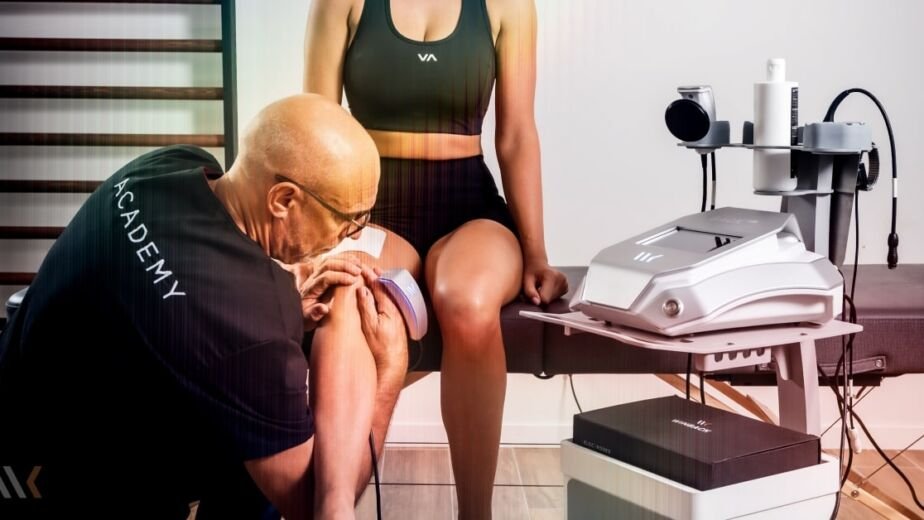Patellofemoral syndrome (PFS)—also known as patellofemoral pain syndrome (PFPS)—is one of the most common causes of anterior knee pain. Patients typically report generalized pain in the front of the knee that worsens during activities that load a flexed knee, such as running, stair climbing, or squatting.
PFS is considered a diagnosis of exclusion, made after ruling out intraarticular or peripatellar pathologies. Most patients respond well to conservative treatments, although symptoms can persist in rare, more resistant cases.
The Role of Resistance Training
Resistance training focused on the quadriceps and hip muscles has consistently shown benefits for pain reduction and improved function. Strengthening these areas may:
- Improve lower limb biomechanics
- Reduce abnormal joint stress
- Induce exercise-related hypoalgesia (pain relief)
New Research: Personalizing Strengthening Programs
A recent study from Denmark, published in the Journal of Orthopaedic & Sports Physical Therapy (Nov 2024)(1), explored which strengthening approach is most effective for different patient profiles:
- Patients with pain catastrophizing or BMI >25: Hip strengthening showed greater benefits.
- Patients with severe baseline knee pain: Quadriceps strengthening was more effective.
Enhancing Results with Winback TECAR Therapy
For High-BMI or Hip-Focused Programs
Incorporating WINBACK TECAR therapy three times a week for 12 weeks can enhance outcomes. When added to hip and quadriceps strengthening programs, TECAR therapy may accelerate symptom resolution.
For patients with BMI over 25, the SLIM+ Hands Free program adds further value:
- Diathermy: Promotes fat burning and metabolic activation
- Hi-EMS (Slim+): Supports lymphatic drainage and postural toning
- Hi-TENS: Encourages epidermal toning
These combined effects may help improve pelvic posture, which is key in patellofemoral mechanics.
For Severe Pain or Quadriceps-Focused Programs
For patients better suited to quadriceps strengthening, adding Rehab+ TECAR therapy may enhance rehab outcomes:
- RET (Low): Improves vascularization, reduces pain, and aids muscle recruitment
- Hi-EMS (Rehab+): Provides short, controlled contractions and mobilization during exercise
The Importance of Individualized Treatment
Every patient with patellofemoral syndrome requires a personalized treatment plan. The first step is determining whether a hip- or quadriceps-focused program is most appropriate. The second step may involve customizing TECAR therapy using Winback BACK4 Hands Free programs for optimal results.
Sources
(1) Hansen, R., Rathleff, M.S., Brushøj, C., Magnusson, S.P., & Henriksen, M.
Differential Effects of Quadriceps and Hip Muscle Exercises for Patellofemoral Pain: A Secondary Effect Modifier Analysis of a Randomized Trial.
Journal of Orthopaedic & Sports Physical Therapy, November 2024, Volume 54, Number 11.



